How to revamp your garden – without spending a fortune

It’s a truth universally known that when household budgets feel the pinch, staycations are a sensible alternative to costly holidays. For most of us, this means our gardens are thrown into the limelight and must become all things to all the family: somewhere for alfresco entertaining, a space for the kids to have fun and, these days, a place to work in the shade too.
Throw into the mix the need for a haven in which to relax and recharge batteries, and you’ll have quite an extensive list of demands for a not-so-modest garden glow-up. But making a garden summer-ready doesn’t have to break the bank; you just need to know where to turn for inspiration.
This year The Royal Windsor Flower Show on June 10 is marking the coronation of King Charles by addressing his enduring love of gardening, plants and the natural world. Celebrating the joys of gardening and the sense of community it can bring, the show’s organisers have chosen seeds as the show’s key theme, keen to champion the idea that gardening is accessible for all, whatever the budget. And what better place to start a garden revamp than by sowing your own seeds?
Given that I have a couple of months to transform my own urban plot into a summer retreat, I caught up with three experts from the show to find out how they would approach such a project, and if they had any tips when it comes to rejuvenating a garden without blowing the budget. From practical advice to innovative design ideas, and from plant varieties to planting combinations, they came up with a veritable cornucopia of suggestions to suit all styles and pockets.
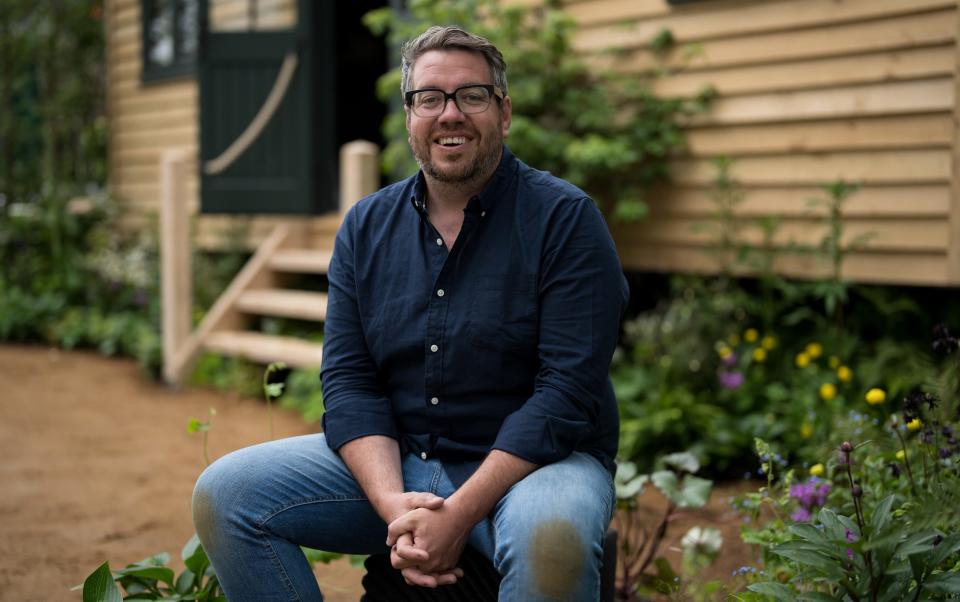
The Designer: Alan Williams
Alan’s King’s Garden at the Windsor show will feature mixed borders that combine fruits and vegetables in a trend known as “edimentals” (when plants are both edible and ornamental), with upcycled elements from his previous Chelsea show gardens.
Can you recommend budget-friendly ways to transform a garden without sacrificing its aesthetic appeal?
Regardless of budget, start by relating the garden’s design back to the house by using proportions and lines that harmonise with the architecture, creating a visually pleasing and cohesive space. Painting fences a dark colour can be a modest outlay, and not only allows plants to stand out, but also creates a sense of uniformity throughout the space.
To manage costs, plan the garden’s development over several years, spreading out expenses. Go for hard materials, such as stone or paving, in high-traffic areas such as dining spaces, and choose more cost-effective aggregates or loose materials for low-use areas.
Buying bare-root trees and shrubs in winter can be a cost-effective way to introduce height and year-round interest, while structural elements like topiary can provide year-round appeal. Avoid skimping on the depth of borders, as deeper borders allow for a more visually appealing mix of plants. Opt for smaller, less mature plants in 9cm pots to save money, incorporate annuals, and don’t underestimate the value of plant swaps with friends.
It might sound counterintuitive if you’re on a budget, but consider hiring a designer to formulate a comprehensive plan, as their expertise can be a valuable investment.
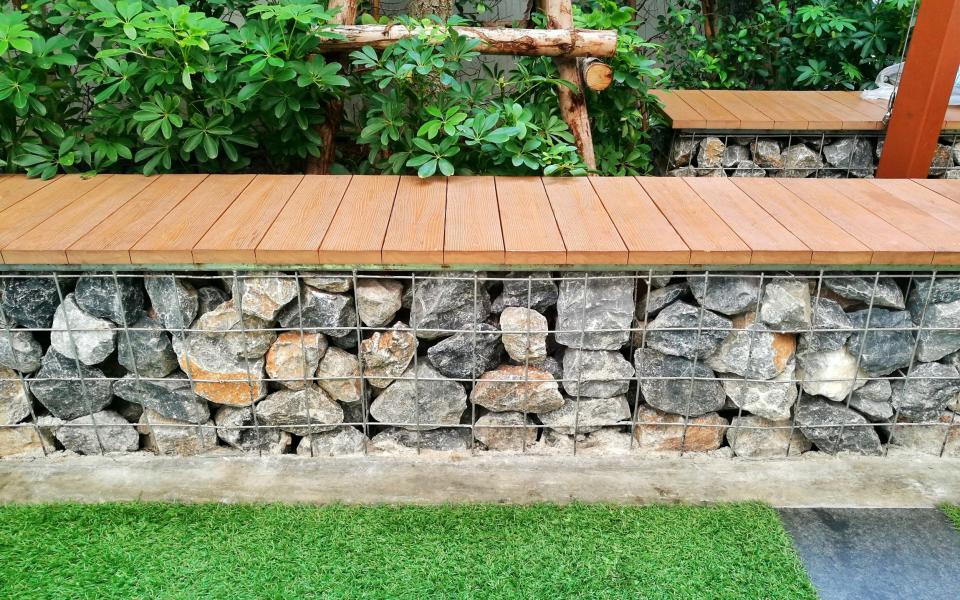
What is the most important thing to consider when it comes to budget garden makeovers?
Planning is everything. If you don’t plan, you can’t budget. Ask yourself how you want to use the space – what’s the brief? And, of course, establish what funds are available right from the start.
Is lighting a necessary expense? Are there any clever, cost-effective ways to incorporate it into a garden design?
Lighting can be very expensive but the good news is you don’t need to overdo it when it comes to adding lights to your garden. Limit it to key elements such as lighting a water feature or a specimen tree, or use it where functionality is important, such as around a seating area at the end of a garden. Plug-and-play garden lights are a cost-effective option as they don’t need to be installed by an electrician.
What are your top three recycling projects that can be incorporated on a budget?
Create a focal point such as a water bowl or firepit from cheap mild steel, which can be treated if you don’t want the rusty look, or left to create an aged effect.
Build pergolas in reclaimed timber or steel. Use and support local fabricators for a fraction of the cost of off-the-shelf or high-end products.
Use gabions to create seating and walling, filled with reclaimed materials.
Consider taking a course to learn new skills – try taskacademy.co.uk/public.
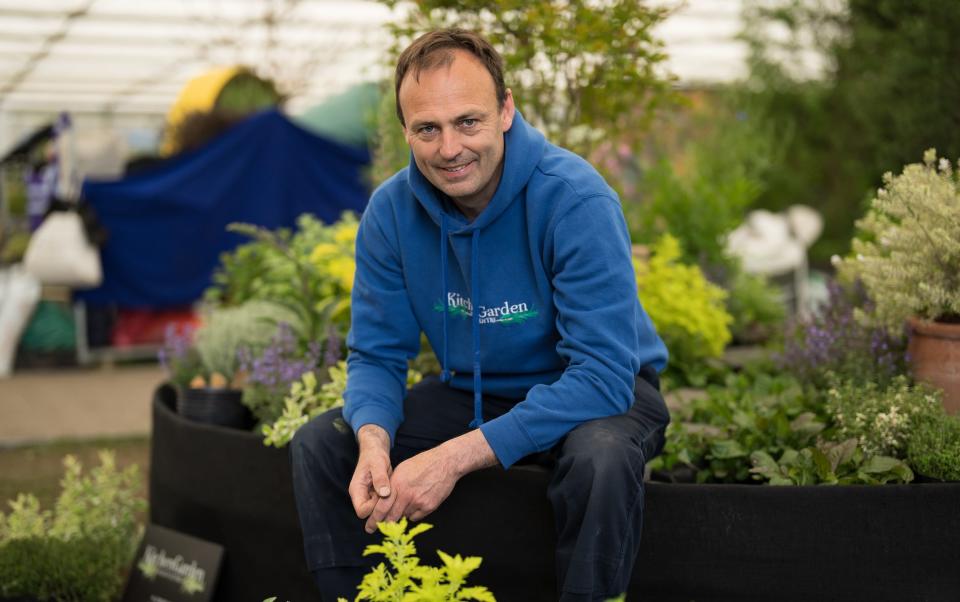
The Grower: Neil Jones
Owner of the Kitchen & Garden Plant Centre and nursery exhibitor at various RHS shows, Neil is a passionate advocate of growing herbs, especially from seed, which he believes is not only cost-effective but also nice and easy, even if you’re new to gardening.
How can you use colour and texture to create an inviting and relaxing outdoor space without spending a lot of money?
Carefully select plants to incorporate a variety of leaf shades. Try introducing variegated foliage, such as variegated lemon balm, in shades of light green, alongside herbs such as feverfew, which has daisy-like flowers and light green leaves, and black peppermint or chocolate mint, with rich, deep hues that add depth and contrast to the garden.
When it comes to enhancing texture, go for plants with grey hues, such as curry plant or cotton lavender, along with Sage ‘Snowflake’, which has furrier leaves, while garlic cress, with its unique foliage, is an attractive choice.
Choose quality 9cm pot-sized herbs as a practical, budget-saving choice. These smaller-sized plants are often more affordable, especially during the spring and early summer when they are ready to flourish and create a delightful display. They provide an opportunity to enjoy a variety of herbs without incurring significant expenses.
Are there any common mistakes to avoid when you’re transforming a garden on a budget?
One common mistake to avoid is unnecessarily removing established plants. Instead of starting from scratch, many existing plants can be repurposed and incorporated into the new design, saving both money and time. Additionally, it’s crucial to take a gradual approach to garden transformation. Rather than removing everything at once, working on the garden over time allows for a more organic and sustainable process, preventing empty spaces and ensuring a continuous flow of growth and beauty.
Another mistake to avoid is selecting flowering plants that only bloom during a specific season, resulting in a garden that looks impressive for only a limited time. To avoid this, it’s essential to choose a variety of plants that offer interest and colour throughout the seasons, ensuring a visually appealing garden all year round.

Can you recommend any herbs that can be used in cooking, health and home-made beauty products?
Chamomile: with its anti-inflammatory, anti-fungal, antibacterial and antioxidant properties, chamomile is a versatile herb. It’s soothing and calm. The flowers can be used to make a soothing tea or infused in beauty products.
Rosemary: apart from adding flavour to food, rosemary serves as a nasal decongestant and is particularly beneficial for those struggling with hay fever. It may also enhance mental alertness, memory and cognitive function. It can be incorporated into cooking or used in aromatherapy and beauty products.
Lemon balm: rich in antioxidants, lemon balm has a calming effect and can be used to make herbal teas or added to salads for a refreshing twist. It also has potential benefits for skincare and relaxation.
Sage: known for its versatility, sage is not only a culinary herb but also offers health benefits. It may reduce cholesterol levels and support the regulation of blood pressure and blood sugar. Sage can be incorporated into various dishes and herbal remedies.
Mint, thyme and ginger: these herbs, when brewed into herbal teas, can aid in reducing blood-sugar levels. Mint, known for its refreshing flavour, and thyme, with its aromatic properties, complement the therapeutic properties of ginger.
If you’re growing vegetables, which herbs attract beneficial insects to increase the chances of a successful harvest?
Alliums such as Welsh onion, chives and garlic chives help to protect root crops.
Grow mint in pots near brassicas: the aroma deters flea beetles.
Marigolds help to deter whitefly.
A lot of herbs, including alliums, rosemary and mint, naturally deter pests.
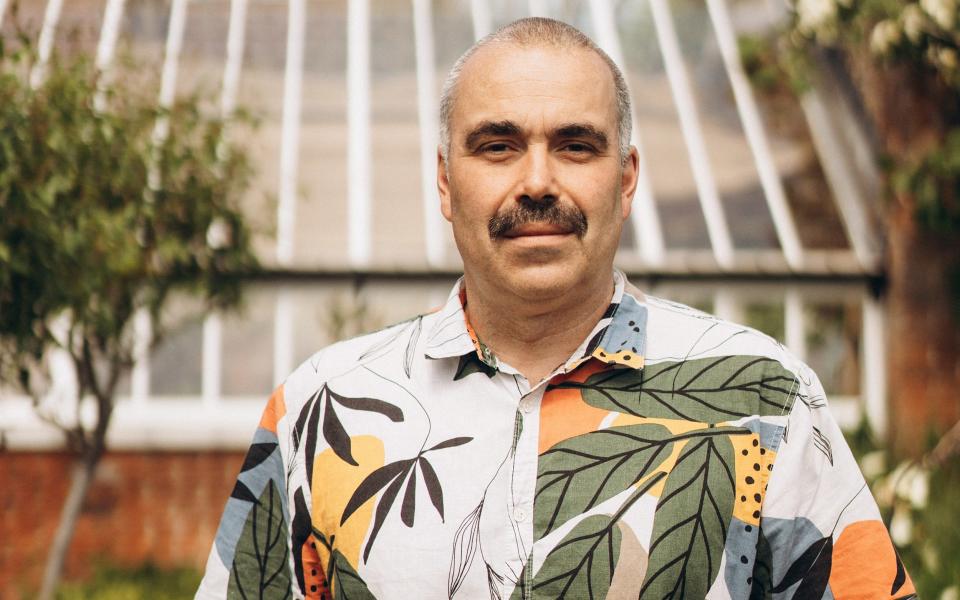
The Organic Gardener: André Tranquilini
With an extensive 220-acre organic and biodynamic farm and garden under his care, André has exceptional knowledge of sustainable agricultural practices. In addition to managing Waltham Place in Berkshire, he is a founding member of Living Seeds, an organic and biodynamic seed company based in Portugal, where he actively contributes to preserving biodiversity and championing the use of sustainable seed varieties.
Is organic gardening possible if you’re gardening on a budget?
Biodiversity is key to creating a resilient and enjoyable garden. In an organic and biodynamic garden, biodiversity is the best tool to avoid problems with pests and diseases. There are about 23 million home gardens in the UK and those are all potential biodiversity reserves.
I am always encouraging gardeners to co-operate, share resources and look beyond their garden fence. No matter how small a garden is, we need to understand our gardens as part of the wider ecosystem, and through collaboration with our communities create wildlife havens that benefit all.
It is our duty as gardeners to leave a legacy of living soils and lasting fertility. In biodynamic gardening we feed the soil, not the plants, with the understanding that if one looks after the soil, the soil will look after everything and everyone else.
Is it possible to save money on maintenance and upkeep costs and keep gardens looking beautiful?
Composting is very cost-effective and the most efficient way to recycle potential waste by creating the most incredible aid for the soil. In a smaller garden it can be difficult to generate all the materials needed for composting but one should also consider what other biodegradable waste the household is generating and experiment with it.
Mulching is a very important technique to save time in the garden with watering and weeding and to keep the soil healthy and happy. My recommendation is always to use biodegradable mulches and my first choice of material is organic straw (although one must be careful when sourcing straw to avoid potential contamination from herbicides or growth hormone regulators that sometimes are used in conventional cereal production). Grass cuttings, garden compost, green wood chippings and leaf mould are all other options.
Growing perennial ornamentals and vegetables is advisable too, because, once established, they are very low-maintenance and mostly drought-tolerant. Consider a less tidy approach and learn to appreciate the beauty of a naturalistic gardening. For example, rather than regularly mowing the entire lawn, leave it to grow and create beautiful paths instead to contrast with the long grass.
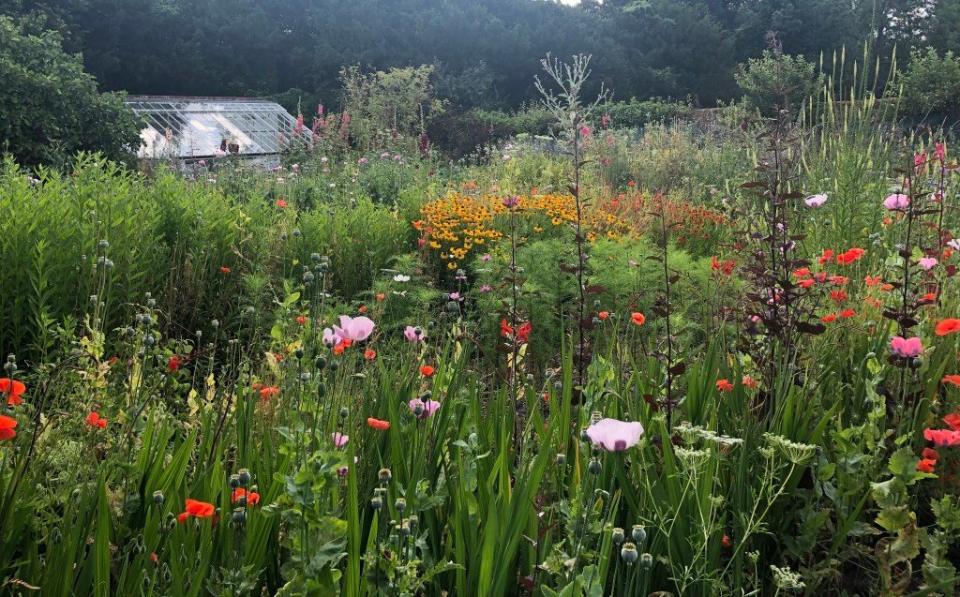
In addition to caring for the soil, what are some sustainable gardening practices that can help keep costs down?
It is important to look at what resources are available in the garden – often something that may be considered a problem is actually part of the solution. For example, nettles can make an incredible foliar fertiliser that is rich in nitrogen and other micronutrients. Prepare a tea by soaking the plant (before it flowers) in water, leave it for a few weeks, then dilute it (one part nettle tea to 10 parts water) and feed it to plants during their vegetative stage. It’s not only a money-saving technique, it minimises your garden’s carbon footprint too.
We do a similar process with comfrey, which is rich in potassium and other micronutrients and works very well for fruiting plants such as tomatoes, courgettes and pumpkins.
And, of course, saving seeds from your garden can help to save on costs, but is also an important environmental practice.
Which low-maintenance plants would you recommend?
Ornamental grasses, such as Calamagrostis × acutiflora ‘Karl Foerster’ and Anemanthele lessoniana
Wild carrot – Daucus carota
Forage herbs such as Salad burnet
Verbena bonariensis
Ammi majus
Salvia officinalis
Need to know
The Royal Windsor Flower Show (rwrhs.com/flower-show) takes place on Saturday June 10, 10am-6pm at Windsor Great Park

